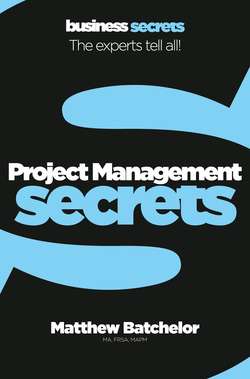Читать книгу Project Management - Matthew Batchelor - Страница 15
Оглавление2.2 Get creative!
Sometimes turning an initial idea into something more coherent requires a little creative effort. In the process-driven world of projects, this can seem difficult. However, that needn’t be the case. There are a number of tools you can use to turn a bright idea into a well-defined outline of your project.
Visual planning
‘Mind maps’ – diagrams representing ideas and tasks – can be very useful for brainstorming initial project ideas. They can range in complexity from simple spider diagrams to lavishly illustrated versions. They work by engaging both sides of the brain in ordering and prioritizing ideas. They are easy to produce on a sheet of paper or company whiteboard; there are also a number of mind-mapping software packages available (some are even free).
To create a mind map, identify a starting idea or goal, say ‘plan a launch party’ for your company’s new clothing store. Write this in the middle of a sheet of paper. Then identify the ‘basic ordering ideas’ (perhaps catering, invitations and publicity), around which individual activities can be clustered on the paper. Then identify individual tasks or smaller work areas coming off different lines of activities.
Non-visual planning
Not everyone thinks visually. Some people have an auditory preference (they like to think in words and sounds), while others prefer kinaesthetic communication (they respond best to concrete ideas).
When discussing your project proposal, try listening to the metaphors people use (‘it sounds like’, ‘it feels like’ and so on) to determine their preferences. This will help you structure your communications accordingly: for example, people with an auditory preference may find it easy to use a mnemonic to recall the key features of your project. (In Secret 1.3, the phrase A Project Is Managed is an example of a mnemonic). Those with a kinaesthetic preference may find it easier to be given a ‘walk-through’ of your main ideas.
Allowing all ideas during planning
Sometimes an initial project scoping meeting can become adversarial, with several points of view being made. Often it is the most skilfully (or forcefully!) argued approach that is adopted, which may or may not be the best one. You can resist this by using your role as Chair to ensure everyone has their say, and by using a structured questioning approach.
For example, you could invite participants to analyse a proposal from three perspectives:
• Dreamer. What are the possibilities here? What new things can we create?
• Critic. Is this idea really workable? What about the risks and downsides?
• Realist. What steps need to be taken to turn these ideas into reality?
This is known as the ‘Disney model’, after Walt Disney, who often used this approach. It will give you a measured view of the proposal, and help prevent a planning meeting from descending into adversarial arguments.
Use mind maps and other tools to stimulate creativity.
